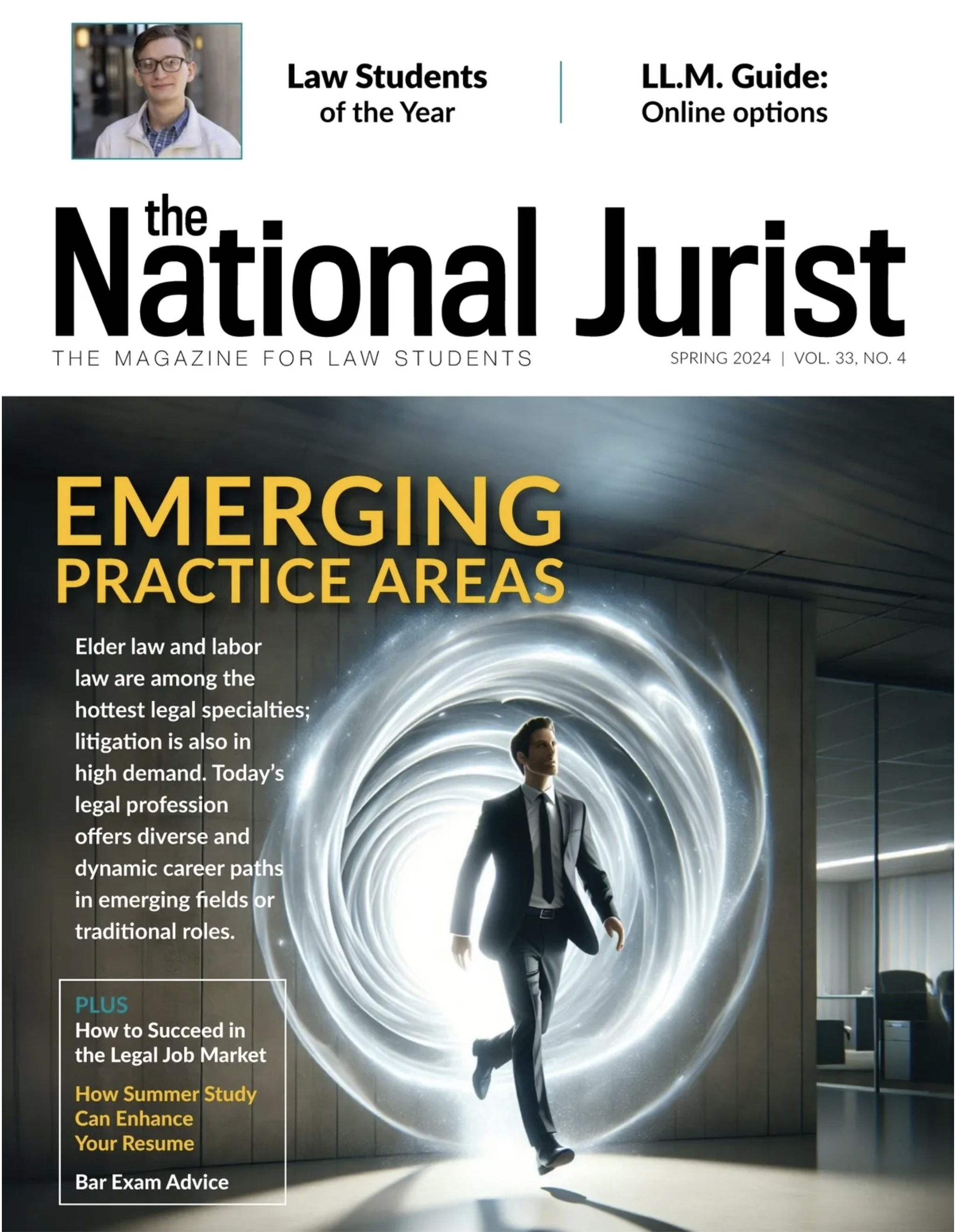Two years ago there was a stand-off in legal education. The American Bar Association, prompted by the Bush administration, wanted to impose new requirements for bar pass rates.
Supporters of diversity in law school felt it would be “a tsunami to the African American community.” Some argued it would result in the closure of three to five law schools, all with large minority enrollments. It could also mean that many law schools would admit fewer minorities, in order to avoid problems with the bar pass standard.
Their concerns did not sway the ABA, and the House of Delegates approved the Bar Passage Standard for law schools in February 2008.
Under those standards, law schools must meet one of the following two benchmarks: (1) Over a five-year period, 75 percent of the graduates who sat for the bar must have passed; and (2) The school’s first-time annual bar passage rate is no more than 15 percent less than the average first-time rate for graduates of ABA-approved law schools in the same jurisdiction.
It is still too soon to tell if the dire predictions will come true. But it has made it clear what law schools must now accomplish.
“In order to increase diversity in the legal profession, the minority passage rate on the bar exam must be increased,” said Cassandra Sneed Ogden, executive director of the Council of Legal Education Opportunity, in an article featured in the May/June 2009 issue of Diversity and The Bar.
To support this objective, the ABA removed restrictions on law schools teaching bar preparation courses, and began sharing best practices for increasing bar passage rates.
Schools are taking action.
What schools are doing now
Sean Lew, professor at Charlotte Law, said he has seen law schools successfully promoting diversity and making great efforts to ensure that African American students feel welcome — welcome not only during their time in law school, but also welcome when entering the legal profession.
“The main way I’ve seen law schools achieve this is by providing mentors,” he said. “Having a legal mentor can offer a law student valuable insight to things that only legal experience can teach. Continuing to have law mentors in the form of dedicated law faculty and deans will continue to positively impact our increasingly diverse legal profession.”
The University of the Pacific, McGeorge School of Law, located in Sacramento, Calif., is one of the most diverse law schools in the nation. Last year, the minority student population represented about 30 percent of the incoming class, according to Courtney Lee, director of academic success at McGeorge. Additionally, the law schools’ bar pass rate for the most recent administration of the exam was 81 percent, above the California ABA law school average of 79 percent.
McGeorge’s Academic Success Program is designed to support students from their first days on campus all the way through the bar exam. They begin with the first-semester Skills Hours Program, where administrators teach the fundamental skills needed for success in law school and legal practice. Upper-division students are available to assist those first-year students.
“Team members represent many different backgrounds to ensure that all new students feel comfortable approaching them with questions,” Lee said. The 2009-10 Team is comprised of an African-American student, a Hispanic student, two Asian American students, and a GLBT student.
Students in their final year of study at McGeorge have the opportunity to take Practical & Persuasive Legal Writing (PPLW), a two-unit elective course designed to demystify the bar exam. Students in PPLW write three essay examinations and three performance tests, all from past administrations of the California Bar Examination. They receive training on how to write effectively for the different component parts of the bar exam, and they receive extensive feedback on their exam answers as well.
Florida A&M University College of Law, which was granted full accreditation by the American Bar Association last July, restructured their Academic Success and Bar Preparation Program in the fall, offering guidance and preparatory skills crucial for bar exam success. The key to the success of the program is getting the attention of minority students early, as bar passage rates were key to the law school’s probation status and subsequent reinstatement.
“FAMU’s students are dedicated and hard working and we are committed to providing them with the best opportunities for accomplishment — both in law school and on the bar exam,” said Dean Leroy Pernell. “The [program] is not only a true reflection of our educational mission, it also reaffirms our dedication to providing our students with a great legal education.”
FAMU’s program was revamped based on a “three-pronged approach.” According to Jendayi Saada, program director, the first and foundational prong of the program gives students the knowledge and understanding they need to increase their first-year GPA scores. Early intervention will “greatly help students understand the direction correlation between first year GPS, graduating GPA and bar passage, as well as the potential impact of poor performance in the first year of law school,” she said.
The second prong of the program is an Academic Success Workshop Series. This series is designed to provide students with the tool they need for processing the information in their substantive courses and doing well on their final exams. The third and final prong of the ASBP consists of one-on-one meetings with students for more focused work on skills such as essay writing and study strategies.
FAMU also began the Bar Exam Success Training (BEST) Program, which provides “a new level of individualized structure and support for FAMU graduates who are taking the bar exam.” It will also compliment the commercial bar review program by incorporating essay and multiple-choice writing workshops as well as individual training and structured study plans designed to assist students in passing the bar exam.
Shani Butts, director of admissions for Catholic University’s Columbus School of Law said learning how to plan and prep, in addition to exposure, are key to success for the minority law student, and the law school.
CUA has seen continued improvement on overall bar passage rates since the Bar Initiative Programs started at the law school seven years ago. For example, in 2003 the overall bar passage rate was 63 percent, compared to 88 percent reported in 2009.
The Practicing Attorneys for Law Students Program (PALS), in which Edgar acts as a consultant, has a strong legacy and tradition of providing supplemental programs and resources to minority law students and new attorneys in the New York City area.
Edgar said she is noticing that a lot more law schools are instituting a bar prep program in the final semester of law school, allowing students to become more engaged in bar subjects before graduation.
“Once you graduate you have a have a week or so before you go into bar study,” Edgar said. “It prepares them for the rigor [of the bar exam].”
Law schools are also asking alumni what they did to prepare for and pass the bar exam.
“Everyone has different strategies,” she said. “For the students listening, it allows them to figure out their own strategies.”
Some law schools seek to increase minority bar pass rates, not by offering special programs but by carefully monitoring the academic standards of their students. If a law school performance is a key to success on the bar exam, some suggest law schools should do more to assist their at-risk students of whatever ethnic background.
For all programs to succeed they need support, said McGeorge’s Lee.
“One of the most important components of our Academic Success Program is the strong support given to us by the faculty,” she said. “Many other faculty members work with me to ensure that they instill similar skills in their substantive classes…It is this continuum that ensures that students of all backgrounds receive academic support throughout their legal studies, from Orientation to the Swearing-In Ceremony.”
Administrators nationwide are even targeting minority students in middle and high schools through innovative pipeline programs — getting them aware and ready for law school.
CUA’s Butts and her law school are collaborators with the Law School Admission Council’s DiscoverLaw.org campaign. The pipeline program is dedicated to the idea that the legal profession must reflect the expanding diversity of society, encouraging racially and ethnically diverse students to discover career opportunities in law and choose a path in undergraduate school to help them succeed.
“We find that if students aren’t thinking about it earlier, it’s not necessarily on their radar,” Butts said.
by Michelle Weyenberg, managing editor for The National Jurist






